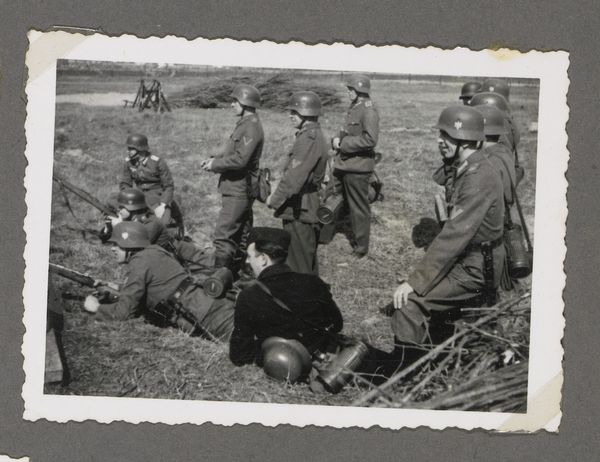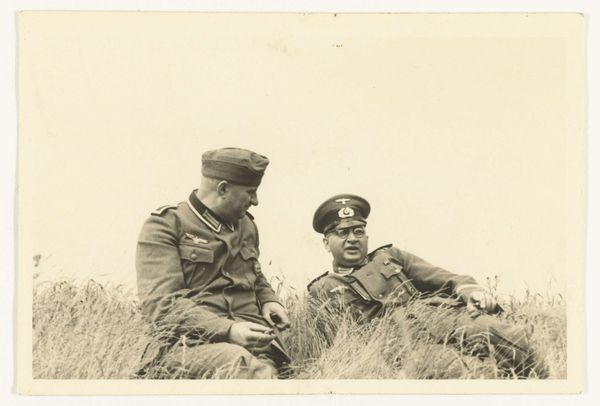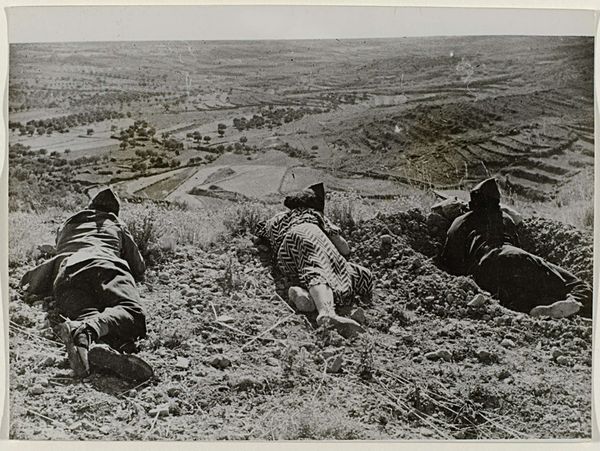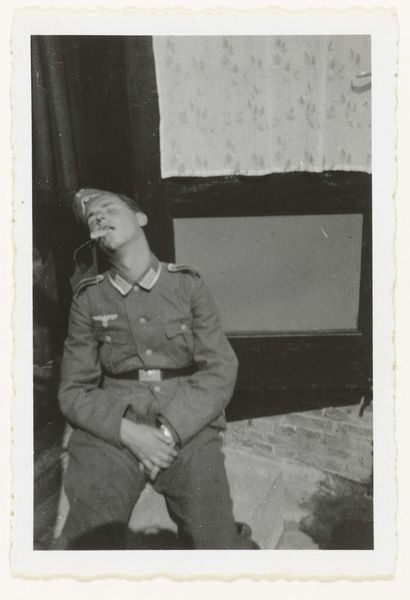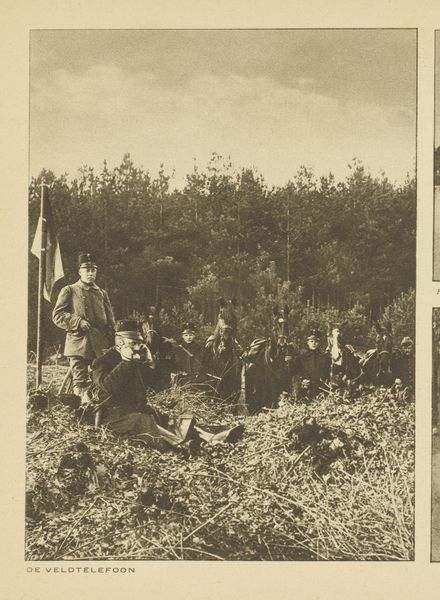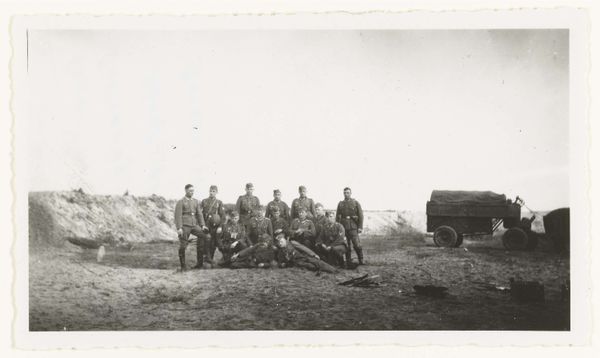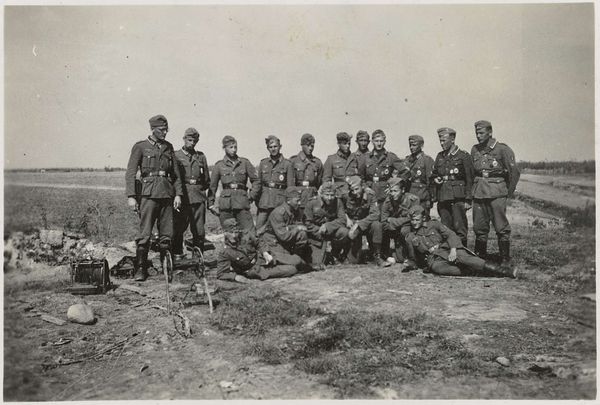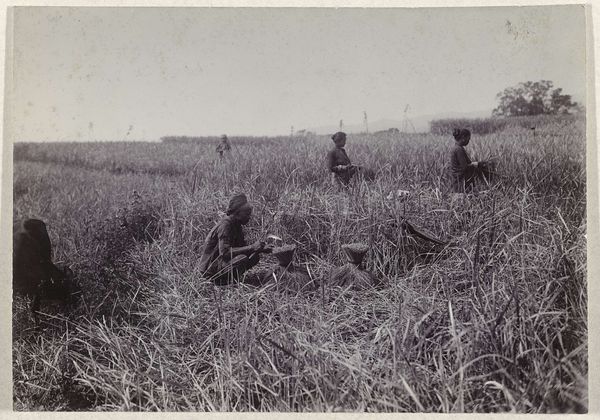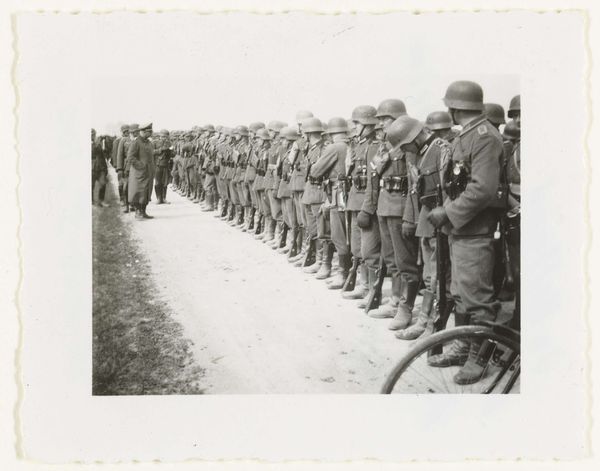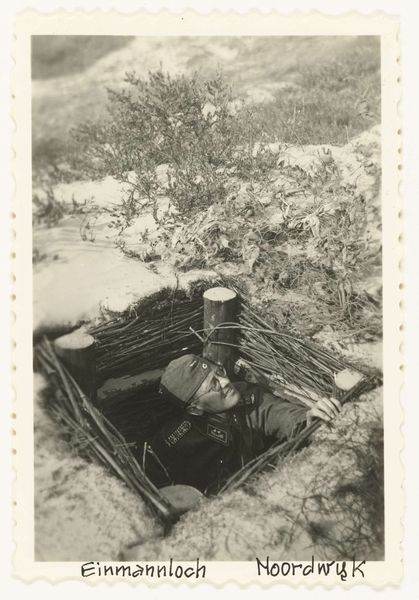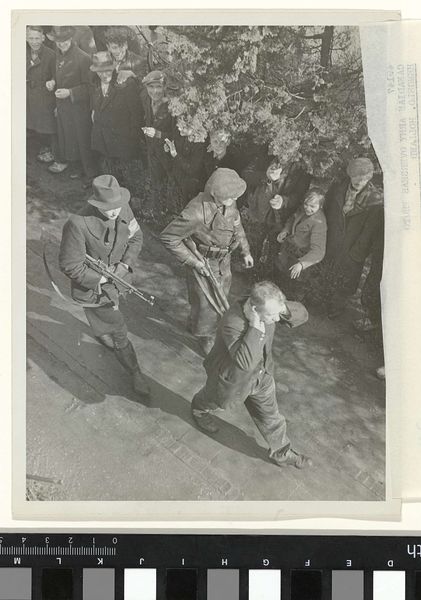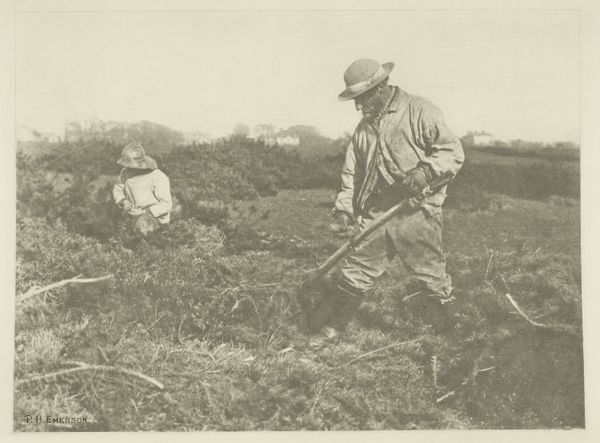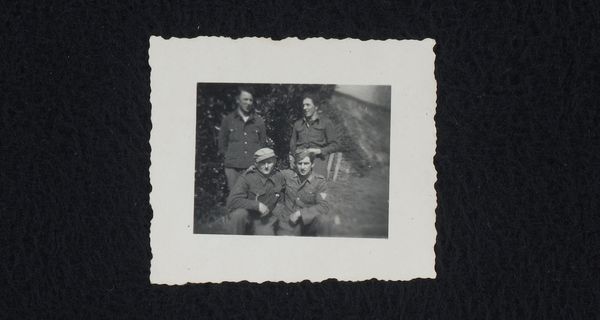
photography, gelatin-silver-print
#
portrait
#
print photography
#
landscape
#
photography
#
gelatin-silver-print
Dimensions: height 7 cm, width 10 cm
Copyright: Rijks Museum: Open Domain
Curator: Let's discuss this gelatin-silver print currently held in the Rijksmuseum’s collection, “Wehrmacht militairen, telegrafisten,” potentially dating from 1940-1946. Two uniformed figures rest in a landscape. Editor: The light! It casts such stark shadows and highlights the textured ground where these soldiers have paused. It gives me the sense of snatched moments of respite amidst... something. Curator: Yes, there is that palpable tension, despite the casual poses. The work functions, in many ways, as an intersectional meditation on gender, race, and power. The photo invites us to think critically about the performativity of masculinity within structures of violence, of oppression, particularly within the military. It's almost an uncanny rendering, forcing viewers to face the uncomfortable realities of power imbalances deeply ingrained in these soldiers and in broader wartime social dynamics. Editor: You highlight a key aspect. Yet I also wonder about the specifics of the silver gelatin process here. Given the scarcity of resources during that era, one needs to consider where these materials might have been sourced, how the image would have been produced and then reproduced—all facets tied inextricably to wartime conditions and industrial mechanisms driving resource exploitation and commodity exchange. Curator: I agree; we can’t forget the role that materiality and social context play, and how that reinforces systems. But beyond the technical specifics, it serves as a stark visual reminder of how social identities were marshaled to advance political causes. By emphasizing that rest still exists amid destruction. The work prompts us to acknowledge uncomfortable complexities regarding historical violence, complicity, and resilience amid times of conflict. Editor: It prompts broader thoughts on materiality as more than neutral tools but imbued themselves within power networks during warfare. Every button and fabric conveys codified rank. Curator: That's precisely why reflecting critically and responsibly when faced with this image becomes crucial given its complex legacy surrounding wartime realities. It forces observers of the work into difficult interrogations, promoting necessary and nuanced discourses to contextualize events such as wars effectively. Editor: I hadn't considered that element fully until now; thinking critically makes you consider the material constraints surrounding that era to give insights.
Comments
No comments
Be the first to comment and join the conversation on the ultimate creative platform.
